Freire Shipyard Floats MBARI's New Research Vessel
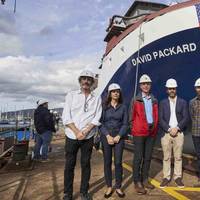
The hull of MBARI’s new flagship research vessel has been floated out at Freire Shipyard in Spain.The new oceanographic vessel, David Packard, which entered the waters of the Vigo estuary for the first time last month, is scheduled for delivery in 2023 to the Monterey Bay Aquarium Research Institute (MBARI), a private, non-profit oceanographic research center in Moss Landing, Calif.“The RV David Packard will be the first state-of-the-art research vessel built not only in Spain…
MacGregor to Equip MBARI's New Research Vessel
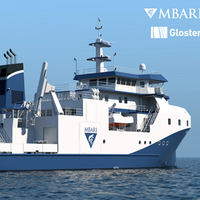
MacGregor, part of Cargotec, said it has been taped to deliver a suite of overboard handling systems for the new oceanographic research vessel David Packard owned by Monterey Bay Aquarium Research Institute (MBARI), a private, nonprofit oceanographic research center based in California. Founded in 1987 by David Packard, MBARI’s mission is to advance marine science and technology to understand a changing ocean. The David Packard is designed by naval architecture firm Glosten, and is currently under construction at Freire Shipyard in Vigo…
Academia’s Climate Change Challenge is Far from Academic
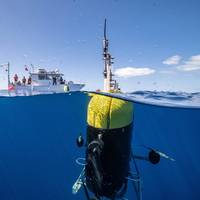
Highlighted in Marine Technology Reporter's MTR100 is the work and technology ongoing in the halls of academia. The most recent report released by the UN Intergovernmental Panel on Climate Change emphasized our warming planet, an expected announcement for many in the scientific community. Faced with the confirmation that human activities have caused an increase in global temperatures, research has turned to seeking answers in the planet’s natural systems. How does each part of the global carbon cycle work and how may it be impacted by the changing climate?
ABB to Equip MBARI’s New Research Vessel
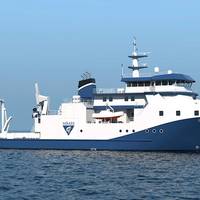
ABB said it will supply power integration technology to support operations on a new research vessel being built for the MBARI (Monterey Bay Aquarium Research Institute) at Freire Shipyard in Vigo, Spain.Earlier this year, MBARI, located in Moss Landing, Calif., announced construction of a new state-of-the-art research vessel designed by Seattle-based Glosten and named in honor of its founder, David Packard. The 50-meter vessel is scheduled to be delivered in 2023.R/V David Packard will feature a wide scope of ABB’s electric…
Glosten to Design, Freire Shipyard to Build MBARI's New Research Vessel
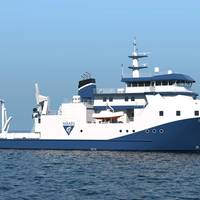
The Monterey Bay Aquarium Research Institute (MBARI) is embarking on a new chapter in its ocean research with the construction of a state-of-the-art ship, a vessel named in honor of MBARI’s founder, David Packard. The R/V David Packard will be capable of accommodating diverse expeditions in Monterey Bay and beyond to further the institute’s mission to explore and understand our changing ocean.It will measure 50 x 12.8 m with a 3.7 m draft, designed to support a crew of 12, plus a science crew of 18.
Environmental DNA Emerging in the Ocean Science Community
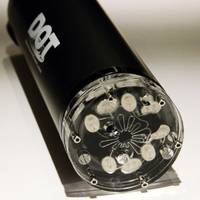
There is a new buzzword in the ocean science/sensing community. The word is eDNA, an abbreviation for environmental DNA. This refers to DNA that can be extracted from environmental samples without first isolating any target organisms. In the maritime community such samples are taken from water. All living organisms leave traces of DNA in their environments which is an indicator of their presence over time. This DNA is released into the environment through the biological process of living animals or by the decomposition of dead organisms.
MBARI Works at Unlocking Ocean Biology
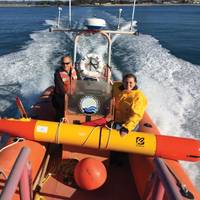
Greater understanding of what goes on in the ocean is starting to become a reality – thanks to growing use of unmanned surface and underwater vehicles and developments in biological sensing. Elaine Maslin takes a look at what a team at MBARI has been doing.Gathering biological data from the oceans remains a significant challenge for oceanographers. Now, an increasing range of unmanned vehicles that are able to work together is becoming available, as is an ability to collect biological data using them.It sounds straight forward…
LRAUV: Arctic Oil-Spill-Mapping Robot Put to the Test
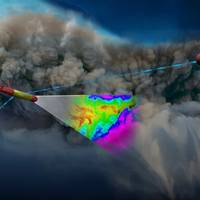
As commercial shipping and energy activities picks up in the Arctic region, the prospect of accidental oil spills in this pristine environment remain a concern. In response, the U.S. Department of Homeland Security (DHS) is taking the lead – through the U.S. Coast Guard – to develop a subsea robotic system to map and report on spills.“Because of ice coverage and the tyranny of distance, it is difficult to get resources and assets up in the Arctic in a quick manner,” said Kirsten Trego, Executive Director of the Coast Guard’s Interagency Coordinating Committee on Oil Pollution Research.
'Smart Boulders' Measure Seafloor Avalanches
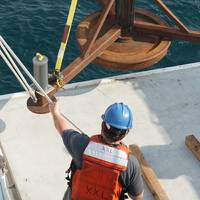
Researchers have deployed high-tech robotic sensors disguised as boulders for the first time to measure the initiation and evolution of the huge, hard-to-measure seafloor avalanches that regularly damage global networks of seafloor telecommunication cables.The so-called "smart boulders" revealed some surprising findings that will help inform where best to lay the seafloor cables that keep the internet running. Published this week in the journal Nature Communications, this research shows that submarine avalanches of rock and sand…
NOAA, NASA & BOEM to Monitor Biodiversity
NOAA, NASA and the Department of the Interior's Bureau of Ocean Energy Management (BOEM) have joined together to support three demonstration projects that will lay the foundation for the first national network to monitor marine biodiversity at scales ranging from microbes to whales. The projects, to be funded at approximately $17 million over the next five years, subject to the availability of funds, will demonstrate how a national operational marine biodiversity observation network could be developed. Such a network would serve as a marine resource management tool to conserve existing biodiversity and enhance U.S. biosecurity against threats such as invasive species and infectious agents.
Deep Ocean Trash Dump Located
Researchers at the Monterey Bay Aquarium Research Institute (MBARI) find that trash is not only cluttering beaches, but is accumulating deep sea, notably in the Monterey Canyon. Surprisingly large amounts of discarded trash end up in the ocean. Plastic bags, aluminum cans, and fishing debris not only clutter our beaches, but accumulate in open-ocean areas such as the 'Great Pacific Garbage Patch' reports ScienceDaily. In total, the researchers counted over 1,500 observations of deep-sea debris, at dive sites from Vancouver Island to the Gulf of California, and as far west as the Hawaiian Islands. In the recent paper, the researchers focused on seafloor debris in and around Monterey Bay -- an area in which MBARI conducts over 200 research dives a year.
R/Vs at Bay Ship & Yacht
The yard-crew at Bay Ship & Yacht shipyard, located on San Francisco Bay in the island City of Alameda, carefully rolled the cradled RV New Horizon from its work station, along the rails to the yard’s new 1200-ton Syncrolift, which lowers the vessel into the estuary that separates Alameda from Oakland. The 170 x 36 ft. vessel had undergone several weeks of underwater hull and machinery repairs at the yard. Once back in the water, she headed to her home port at the University of California’s Scripps Institution of Oceanography in San Diego to join the three other vessels of the research fleet. Other R/Vs that have been dry-docked recently at Bay Ship & Yacht include.
Bay Ship & Yacht Services Research Vessels
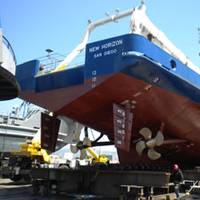
Dawn has broken over the Bay Ship & Yacht shipyard, located on San Francisco Bay in the island City of Alameda, as the yard-crew carefully rolls the cradled Research Vessel or R/V New Horizon from her work station, along the rails to the yard’s new 1200-ton Syncrolift, which gently lowers the vessel into the estuary that separates Alameda from Oakland. Sparkling in the morning sun, the 170-by-36 ft vessel, weighing almost 800 tons, had undergone several weeks of underwater hull and machinery repairs at the yard.
Expedition to Explore Submerged Wreck of Airship
On September 17, 2006 researchers from NOAA’s National Marine Sanctuary program and Monterey Bay Aquarium Research Institute will embark on an expedition off the Big Sur coast to conduct an archaeological investigation at the submerged wreck site of the rigid airship USS Macon, the nation’s largest and last U.S. built rigid lighter-than-air craft. The 785-ft. USS Macon, an U.S. Navy "dirigible," and its four Curtiss F9C-2 Sparrowhawk aircraft were lost on February 12, 1935 during severe weather offshore of Point Sur, Calif., on a routine flight from the Channel Islands to its home base at Moffett airfield. The wreckage of the USS Macon provide an opportunity to study the relatively undisturbed archaeological remnants of a unique period of U.S. aviation history.
Med Taipei Owners, Operators to Pay $3.25M in Settlement
The owners and operators of the foreign-flagged container vessel Med Taipei have agreed to pay $3.25m to the United States to resolve allegations that the 15 containers lost overboard in 2004 resulted in long-term damage to the Monterey Bay National Marine Sanctuary (MBNMS), the Department of Justice and the Department of Commerce announced on July 25. The settlement in behalf of MBNMS, located off the coast of California, and the owners and operators of the vessel – All Oceans Transportation, Inc., Italia Marritema SpA and Yang Ming Transport Corporation – represents the largest damages awarded to date for damages to a national marine sanctuary. In February 2004, 15 containers fell overboard from the Med Taipei when the vessel was traveling on rough seas from San Francisco to Los Angeles.
Marine Research Vessel Gets Structural Overhaul
Western Flyer (shown on cover) is nearing completion of a year-long structural aluminum reinforcement project at Bay Ship & Yacht Co., Alameda, Calif. The 117 x 53 ft. twin-hulled SWATH is undergoing a major overhaul to correct structural cracking that had been discovered and monitored prior to haulout in July, 1998. Built for the Monterey Bay Aquarium Research Institute (MBARI) by SWATH Ocean Systems, Western Flyer, displacing 419 long tons, is home-ported at Moss Landing, Calif., where its primary mission is as support ship and deployment platform for unmanned submarine Tiburon. The ROV is deployed through a "moon pool" opening in the center of the wet deck under the main cabin and has depth capability to more than 13,000 ft.
The Marine Advanced Technology Education (MATE) Center:
The Marine Advanced Technology Education (MATE) Center, headquartered at Monterey Peninsula College in Monterey, California, is a National Science Foundation (NSF)-funded partnership of organizations concerned with marine science and technology education. The MATE Center coordinates and facilitates the development of educational programs in marine science and technology involving grades 9-16, with an emphasis on community colleges. In the Monterey Bay region, MATE and Monterey Peninsula College have developed a new Marine Science and Technology Associate Degree and Certificate Program that begins this Fall 1999 semester with courses geared to prepare students for careers in marine science and technology.





